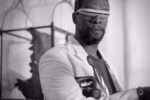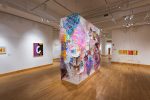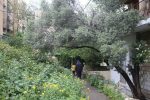(Rachel’s post explores video artist Soun-Gui Kim’s new exhibit at Slought Foundation. Rachel also attended a discussion between Kim and art theorist Thierry de Duve, exploring the artist’s process, philosophies and influences. — the Artblog editors)
The monitors were turned on one by one. Two projectors. Four screens. Six sets of sounds.
Soun-Gui Kim stood in the middle of the gallery, her left hand shielding her eyes, listening. From time to time she looked up, pointed up or down, then bowed her head as the volume was adjusted. When the sound satisfied her ears, she nodded enthusiastically, repeating the phrase, “Tres bien, tres bien.” For 30 minutes she moved through the space, pausing to hear how the voices were melding, confirming they were communicable, her ears leading.
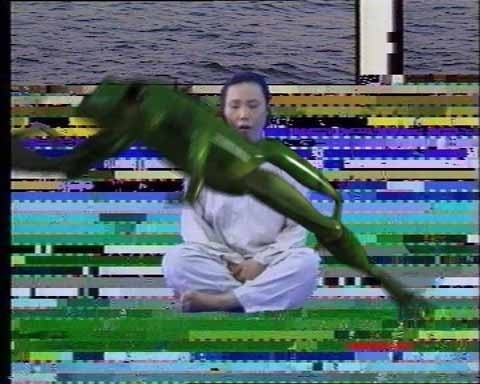
“Beating the Market: Soun-Gui Kim in dialogue with Cage, Derrida and Nancy,” on view at Slought through February, features a series of conversations on video from 1985-2002. Jacques Derrida discusses the globalized art world and the role of history. Jean-Luc Nancy explores the concept of disappearance. John Cage reads a text composition. Throughout, Kim poses questions, performs, and adds her voice. The result is a single dialogue composed of many.
A limitless medium, without a frame
On Friday, December 6th, another conversation was added to the space. Jean-Michel Rabaté, UPenn Professor of English and Comparative Literature and Slought co-founder, moderated a discussion between Kim and Belgian art theorist and critic Thierry de Duve. The conversants dove into Kim’s history, creative process, and theoretical proclivities.
Korean-born Kim moved to Paris in the 1970s. After discovering video art, she destroyed her painted works, devoting herself to the new medium. “For me, video is light and life,” Kim commented. “My interest began when I decided that I wanted to do something with light. I liked the idea of creating something without limits–without the frame. In video, I could finally seek out clouds and the noises of the road. I saw how they could be captured.”

Kim’s collaborations with Nam June Paik–another Korean-born video artist–drew close comparisons, though Kim was quick to point out their divergent approaches. “For me, video is always volume by light,” she explained. “And image is woven by light.”
Reveling in word play and the paradox of language, Kim’s later collaborations with John Cage and Western philosophers were natural pairings. She spoke of initial collaborations with these thinkers, recalling her first meeting with Derrida as a “beautiful encounter.” Throughout these narratives wove the thread of sound–noise, speech and silence. “Silence is not something absent,” Kim explained. “When we receive sound, we have to be prepared. The idea of receiving is encounter for me.” Thierry de Duve agreed: “Silence is that which reveals the moment of encounter,” he added. “And that escapes the market.”
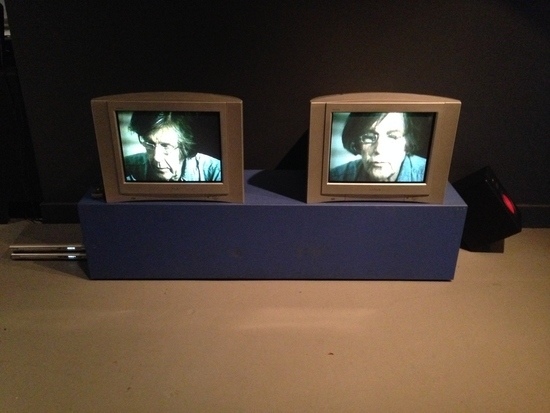
Escaping the market and encountering resistance
From there, the conversants dove into questions about globalization and the market, de Duve asking Kim, “How can art escape and resist this? And do you think your work resists the market?”
She responded, “One of the most important things about art is resistance.”
De Duve provoked her further: “Resistance to what?”
“To it all,” Kim replied. “I think we need to open the mind of oneself to open up the world.” She paused, then added, “Art is both floating and fluttering.”
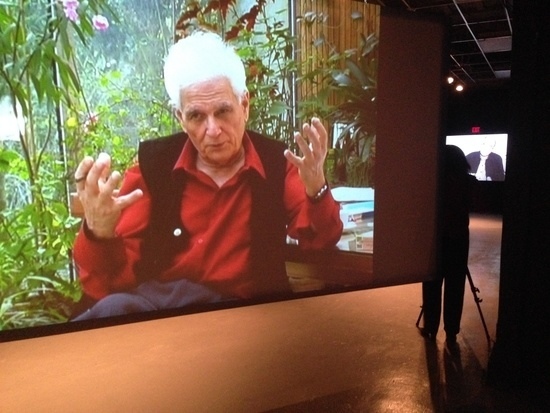
To elaborate, Kim brought up the concept of chaos. “In the Eastern tradition, chaos is a synonym of the beginning. As soon as there was a beginning, there was life. And before, nothing.” Resistance, she was saying, was as a negotiation of chaos–itself a given factor of life.
“If you look at the conversation with Nancy,” Kim went on, “It is about disappearance. Disappearance is the very notion of contemporary art. Disappearance is the presentation – it has a past, present and future. It is questioning. It is interrogation.”
The two went on discussing these concepts, exploring how they played out within the videos themselves, engaging questions about art, the world, silence and sound. Before opening the space up for questions, de Duve turned to Kim and asked, “With your background in Eastern philosophy, why did you seek out these Western philosophers?”
Kim gave some answers, mentioning her studies, her intellectual pursuit. Finally she said, “It was by chance. I had great encounters.”
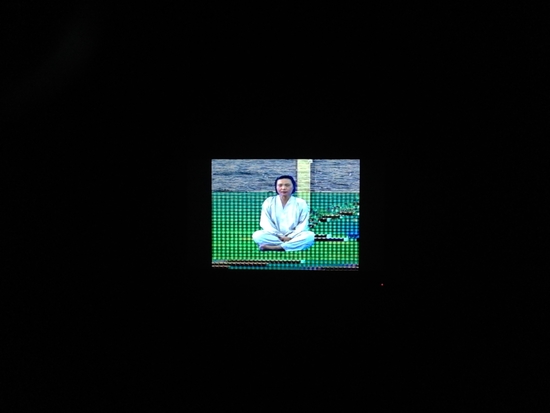
“Beating the Market” is on view at Slought until January 18th. Public hours are Thursday-Saturday 1-6pm.
Rachel Heidenry is the Senior Research and Curatorial Fellow at Slought. Images courtesy of the author.


